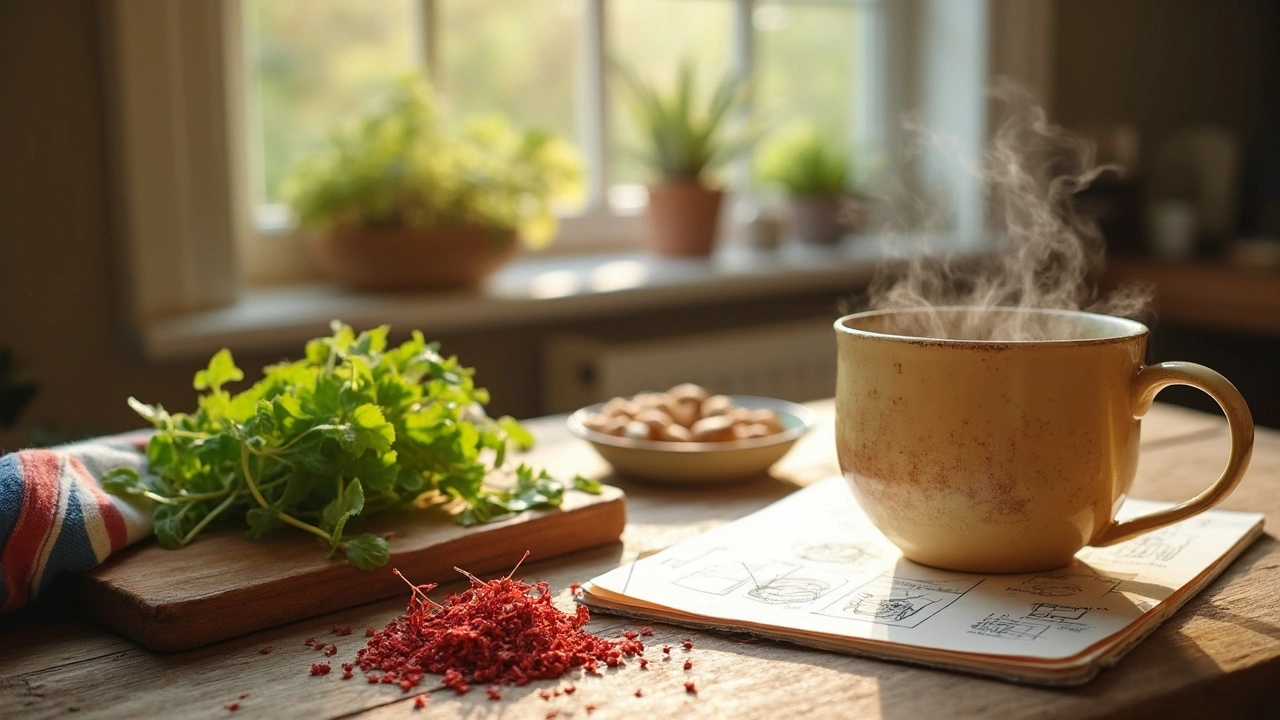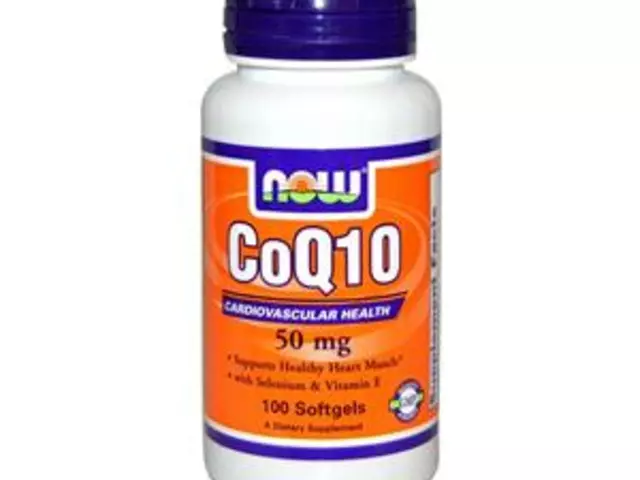
Why People Hunt for Natural Diuretics: The Lasix Dilemma
Water retention sneaks up with swollen ankles, a puffy face, or that tight ring feeling you can’t shake. Most folks hit Lasix (furosemide) for fast relief—no surprise there. It really moves fluid fast, which feels like magic when your feet barely fit in your shoes after a salty meal. But you know how it goes: you solve one problem and run smack into a dozen side effects—low potassium, endless bathroom trips, dizziness, and at times, even risk to your kidneys if things get out of hand. Not everyone needs or wants that kind of pharmaceutical sledgehammer for a problem caused by lifestyle, diet, or mild heart concerns. Even doctors sometimes hesitate to keep people on long-term Lasix just because their ankles look swollen after a flight or they ate their weight in ramen.
The big question becomes: Are there reliable natural options that can help ease mild edema—without rattling your body’s whole mineral balance or leaving you glued to the bathroom? Turns out, natural diuretics aren’t just wishful thinking. If you poke around real studies and dig through trusted herbal medicine textbooks, you’ll spot some standout names like dandelion, hibiscus, and foods loaded with magnesium. These aren’t backyard myths; there’s actual science behind them, some with small controlled trials and others rooted in decades of traditional medicine.
Before you clear out your medicine cabinet, though—it’s worth pointing out: natural doesn't mean harmless. Some herbs pack a punch strong enough to mess with your prescription drugs, and any change in fluid balance should always have your doctor’s blessing, especially if you’ve got heart, kidney, or liver issues. But if you’re stuck in the “swollen, uncomfortable, but want something safer than Lasix” club, this guide is built just for you. More people are searching for OTC Lasix substitute solutions every year—so let’s cut through the noise and zero in on what actually works, what the research says, and how real people can use these natural diuretics without losing their mind (or their electrolytes).
Dandelion: Science Behind Nature’s Weed-Turned-Water-Pill
If you told a 19th-century farmer that dandelions would someday be sold in fancy teas and capsules, they’d probably laugh themselves off the porch. But here’s the kicker: dandelion (Taraxacum officinale) has been used for centuries to flush out excess fluid. In fact, its French nickname—pissenlit—literally means “pee the bed.” Awkward name, but that’s proof of its *actual* diuretic effects. So, how does a pesky yard weed wind up backed by studies?
It all comes down to the blend of compounds in its leaves and roots. Dandelion is rich in potassium, which is the exact mineral most prescription diuretics, like Lasix, tend to flush out. That means you’re less likely to end up with cramping muscles or heart palpitations—dandelion keeps a gentle hand on potassium while encouraging your kidneys to move extra water. The German Commission E (their version of the FDA for herbs) has even recognized dandelion as a legitimate treatment for water retention, so this isn’t just folk wisdom passed down with home remedies.
What about real scientific tests? One small 2009 study with healthy people found that taking fresh dandelion leaf extract increased urine output within five hours. The effect wasn’t as extreme as Lasix, but people actually peed more—enough that the researchers noted it could help with mild water retention. There’s also evidence that dandelion contains bioactive plant chemicals—flavonoids, terpenoids, and phenolic acids—that make the kidneys filter fluids a bit more actively.
And no, you don’t have to graze in the backyard. These days, dandelion’s available in standardized capsules, teas, and even tinctures. If you want to add a mild diuretic punch to your day, a dandelion tea after meals works for many people. Just be aware: those who are allergic to ragweed or have gallbladder problems should skip it, and pregnant women should check with their doctor first. Tip from the trenches: If you’re new to dandelion, start with one tea bag a day and track your bathroom trips. See how your body reacts instead of diving into a whole jug.
For the stats folks, here’s a look at the potassium content of common diuretics versus dandelion, just to see how gentle dandelion can be on your system:
| Substance | Effect on Potassium | Urine Output (Noted in Studies) |
|---|---|---|
| Lasix (Furosemide) | Decreases potassium | High, rapid diuresis |
| Dandelion (Leaf extract) | Maintains/increases potassium (gentle) | Moderate, gradual diuresis |
Now, if you’re dealing with hardcore edema from congestive heart failure, nothing replaces the sheer force of a prescription diuretic. But if you wake up with socks embedded in your ankles or feel bloated before a big event, sipping dandelion tea is hands down gentler than resorting to pills. Just note any allergic reactions or stomach upset, and keep your doctor in the loop if you’re managing a medical condition.

Hibiscus: The Crimson Tea with Real Diuretic Firepower
You might know hibiscus as that tangy, cranberry-red tea served in trendy cafés or Middle Eastern restaurants. But look closer: hibiscus (Hibiscus sabdariffa) isn’t just a pretty face (or flower). Scientific research lines up behind its reputation as a natural diuretic, particularly for folks who struggle with occasional swelling and high blood pressure. One mainstream study, published in the Journal of Ethnopharmacology, tracked people sipping hibiscus tea for just two weeks—many had a noticeable drop in blood pressure and smaller ankles to show for it. That’s not magic; it’s the plant’s powerful combo of anthocyanins and flavonoids doing the heavy lifting.
Unlike caffeine-heavy water pills or herbal concoctions that have you vibrating with jitters, hibiscus goes easy on your system. The action partly works by relaxing blood vessels (which helps push excess fluid through the kidneys), but it also stimulates gentle diuresis—so you lose just enough extra fluid to feel less puffy, not flat-out dehydrated. The side benefit? Hibiscus delivers antioxidants that help clean up inflammatory byproducts in your body, which can be a simmering trigger for water retention anyway.
Think of hibiscus tea as a two-for-one: a mild Lasix alternative plus a blood pressure helper. It’s why some natural practitioners recommend it before turning to prescription meds, especially for folks with prehypertension or lifestyle-driven swelling. And if you want more proof: a 2015 study out of Iran found that participants who drank hibiscus tea daily had a significant reduction in both systolic and diastolic blood pressure compared to a placebo group—without major side effects.
You can brew hibiscus hot or cold; just steep about 1–2 teaspoons of dried petals (or a standard tea bag) in boiling water for 5–10 minutes. The color will practically glow in the cup, and the flavor has an addicting tartness that pairs well with a dash of honey or lemon.
Don’t go wild, though—anything in excess brings risk. There are rare reports of hibiscus lowering potassium, so people with existing kidney disease or taking potassium-wasting drugs should run it by a doctor. If you’re allergic to plants in the mallow family, swap it for another option. Bonus tip: Drinking hibiscus iced after a salty meal works wonders on finger puffiness (makes for a solid after-party recovery trick). And, for those watching their waistline, hibiscus is naturally calorie-free and loaded with vitamin C, which is good news for your immune system as well.
Folks with mild fluid retention who brewed hibiscus daily often report a lighter, less bloated feeling within a week or two—proof that sometimes nature’s solutions do pack a real punch, minus the pharmacy lineup. And you won’t end up with the dreaded dry mouth or weird taste in your mouth that some prescription water pills deliver. For those interested in comparing various options, the landscape of OTC Lasix substitute products is growing, but hibiscus holds its own in both research and real-world results.
The Role of Magnesium-Rich Foods: Eating Your Way to a Drier, Healthier Body
Magnesium doesn’t grab headlines like exotic teas or herbal capsules, but it quietly works its magic in the background, especially if you’re trying to shed water weight or keep blood pressure on the sunny side. Your body depends on enough magnesium to properly regulate water balance, relax blood vessels, and keep nerve signals humming along. When magnesium runs low—maybe from stress, too much alcohol, or a junk food binge—your system gets clingy about holding on to salt and water. That’s why loading up on magnesium-rich foods is a backdoor strategy to nudge your body to release unwanted fluid.
The evidence is rock solid. In one chunk of the massive Nurses’ Health Study, researchers spotted that women eating the most magnesium from food had a lower risk of developing hypertension. That’s a roundabout way of saying they held on to less salt, less water, and felt less tight and swollen. Another study from the American Journal of Clinical Nutrition followed more than 8,000 adults and found that those who ramped up their dietary magnesium intake had not just lower blood pressure, but a modestly lower risk of edema-related symptoms. Unlike synthetic pills, food-based magnesium comes bundled with fiber, antioxidants, and other minerals that promote a healthy fluid balance.
So, what does “magnesium-rich food” actually look like on a plate? Bring on the spinach, pumpkin seeds, almonds, cashews, flaxseeds, black beans, and even good old-fashioned dark chocolate (aim for 70% or higher cocoa for the real magnesium punch). Bananas, avocados, and quinoa are also reliable sources. Don’t forget leafy greens—throw them in your eggs, soups, or even green smoothies for an easy magnesium upgrade.
For the data hounds, here’s a handy table showing the magnesium content in some classic foods you’ll spot at any grocery store:
| Food | Magnesium (mg per serving) | Serving Size |
|---|---|---|
| Pumpkin seeds | 168 | 1 ounce (28g) |
| Almonds | 80 | 1 ounce (28g) |
| Black beans | 60 | 1/2 cup cooked |
| Spinach | 78 | 1/2 cup cooked |
| Dark chocolate (70-85% cocoa) | 65 | 1 ounce (28g) |
Don’t stress about counting milligrams; just include a few of these in snacks or meals every day and you’ll start to feel the shift—less puffiness, better energy, and, for some folks, easier sleep. People who want a more targeted approach can pair magnesium-rich foods with mild herbal teas like dandelion or hibiscus for a “triple threat” against water retention.
Still, there’s a ceiling. If you’re tempted to pop high-dose magnesium supplements, remember too much can lead to diarrhea and stomach cramps, so stick to food first and supplements only if your doctor gives the green light. And if your current meds already tinker with magnesium (like diuretics or heart drugs), always check in before making big diet changes.
Bottom line: your grocery cart can help you pee away extra bloat, lower blood pressure, and keep fluid where it belongs. That’s smart health, all without a pharmacy slip or scary side effects list taped to your fridge.





Dina Mohamed
May 4, 2025 AT 15:11Wow, what a thorough rundown! 🌿 The dandelion section really shines-rich in potassium, gentle on electrolytes, and backed by that German Commission E nod. If you’re new to herbal diuretics, start with a single tea bag a day and log your bathroom trips; the data will tell you if it’s enough. Remember, the goal is to ease mild edema, not to replace a prescription for severe heart failure. Keep the momentum going, and share your personal tweaks in the comments!
Kitty Lorentz
May 5, 2025 AT 10:37i think hibiscus is cool but watch out for low potassium
inas raman
May 6, 2025 AT 06:04First off, kudos for pulling together the science-nothing beats a solid reference list when you’re trying to convince friends that herbs aren’t just “hippie hype.” The hibiscus tea, for example, does more than taste like a raspberry pop; the anthocyanins actively relax vascular smooth muscle, which in turn helps the kidneys flush out extra fluid without a crash in blood pressure. Because it’s low‑caffeine and high‑antioxidant, you won’t get the jittery side‑effects that coffee or some over‑the‑counter water pills bring. I’ve tried swapping my afternoon soda for a cold hibiscus brew after a salty dinner, and by the next morning my fingers were noticeably less puffy. The magnesium foods are a smart addition too-think spinach smoothies with a handful of pumpkin seeds, you’ll get a steady supply of that mineral that keeps sodium from hanging onto water. When you combine those foods with a dandelion tea, you’re basically giving your kidneys a gentle nudge rather than a sledgehammer. Speaking of dandelion, the potassium content can actually offset the modest potassium loss you might see with mild diuretics, which is a win‑win for muscle function. It’s also worth mentioning that the studies cited aren’t just tiny lab tests; many involve real‑world participants who kept food diaries and urine logs, so the outcomes feel applicable. If you’re worried about interactions, a quick chat with your primary care doc can clear up any red flags, especially if you’re on ACE inhibitors or other heart meds. Also, don’t forget hydration-drinking enough water ensures that the diuretic effect isn’t just pulling electrolytes out with you. For anyone on a budget, most of these items are grocery‑store cheap: a bag of dried hibiscus, a bunch of dandelion leaves, and a bulk bag of almonds. And yes, the taste might be an acquired one, but a squeeze of lemon or a dash of honey can make the difference. Lastly, consistency beats intensity; sipping a cup daily is far more effective than a massive gulp once a week. So, give it a try, track your swelling, and let us know how the “nature’s water pill” combo works for you. Your feedback will help shape future DIY diuretic guides.
Jenny Newell
May 7, 2025 AT 01:31The presented data aligns with established renal physiology; specifically, the potassium-sparing effect of Taraxacum officinale mitigates hypokalemic risk inherent to loop diuretics. However, the magnitude of natriuresis appears modest, suggesting its utility is confined to subclinical edema. Integration into a multimodal regimen-including dietary magnesium-could plausibly enhance osmotic gradient regulation. Clinical oversight remains paramount.
Kevin Zac
May 7, 2025 AT 20:57From a pathophysiological standpoint, hibiscus anthocyanins exert vasodilatory action via nitric oxide modulation, which indirectly promotes diuresis by reducing afterload on the renal vasculature. Coupled with the high magnesium content in leafy greens, you create a synergistic environment that favors fluid excretion while preserving electrolyte homeostasis. I’d recommend a structured protocol: 300 ml hibiscus tea BID, 1–2 cups dandelion infusion QD, and a daily serving of pumpkin seeds to sustain magnesium levels. This triad mirrors the pharmacodynamics of low-dose thiazides without the associated metabolic derangements.
Stephanie Pineda
May 8, 2025 AT 16:24Alright, let’s get real-nature’s pharmacy isn’t a free-for‑all, but it does have some legit tricks up its sleeve. Dandelion is basically a potassium‑packed hero that whispers “pee‑pee” to your kidneys without the harsh shout of Lasix. Hibiscus brings the zing of antioxidants while still nudging fluid out, and it tastes like a party in your mouth if you’re into that tart vibe. Then, there’s magnesium-think of it as the backstage crew that keeps the whole show running smooth, preventing the salty‑water cling‑on. The key? Consistency, not a one‑off binge; your body needs time to adjust to the gentle nudge. So, sip, snack, and stay hydrated, and you’ll likely see the swelling melt away like ice on a summer sidewalk.
Anne Snyder
May 9, 2025 AT 11:51Great summary! Adding a splash of lemon to the hibiscus can also boost vitamin C absorption.
Rebecca M
May 10, 2025 AT 07:17While the article admirably compiles several peer‑reviewed sources, it overlooks the pharmacokinetic variability among different dandelion extracts, which can impact diuretic potency. Moreover, the claim that hibiscus uniformly lowers potassium is not universally supported; some trials report neutral electrolyte outcomes, suggesting a need for stratified analysis based on baseline renal function. The magnesium tables are helpful, yet the bioavailability differences between phytate‑bound and free magnesium are not addressed, potentially misleading readers about efficacy. Lastly, the recommendations lack dosage specificity-without clear gram‑per‑day guidelines, laypersons may under‑ or overdose, risking adverse effects. Future revisions should incorporate standardized extract concentrations, clarify electrolyte monitoring protocols, and reference clinical guidelines for safe implementation.
Bianca Fernández Rodríguez
May 11, 2025 AT 02:44Honestly i think all this natural diuretic hype is overblown; most of the studies are tiny and not exactly conclusive. Plus, some people might end up drinking way too much tea and get dehydration. If you rely on herbs you could miss the chance to get proper medical treatment when you actually need it. So maybe stick to proven meds if the swelling is significant.
Patrick Culliton
May 11, 2025 AT 22:11While skepticism is healthy, dismissing the entire body of research because of sample size ignores the cumulative evidence showing modest benefits. Small studies are often the first step toward larger trials, and many patients report real improvement. It’s about balance, not all‑or‑nothing.
Andrea Smith
May 12, 2025 AT 17:37Dear readers, I commend the thoroughness of this compilation and the emphasis on evidence‑based herbal interventions. It is encouraging to see such a balanced discussion of efficacy and safety considerations. I would like to extend an invitation for further scholarly exchange on optimal dosing strategies. Thank you for fostering an informative dialogue.
Gary O'Connor
May 13, 2025 AT 13:04Nice write up! love the formal tone but still easy 2 read.
Justin Stanus
May 14, 2025 AT 08:31Reading this feels like a never‑ending parade of buzzwords, and honestly, the constant name‑dropping of studies just makes my head spin. It’s as if the author wants us to believe that a cup of tea can replace proper medical care, which is a dangerous oversimplification. The tone is overly enthusiastic, bordering on hype, and it glosses over the serious risks of self‑medicating. I’m left wondering whether any of this actually helps anyone or just fills up the internet with fluff. Spare us the endless optimism and give us real, actionable data.
Claire Mahony
May 15, 2025 AT 03:57While your frustration is noted, dismissing the entire article overlooks the valuable practical tips it offers. Not every reader is a medical professional; many benefit from guided lifestyle changes. A balanced perspective would acknowledge both strengths and limitations.
Andrea Jacobsen
May 15, 2025 AT 23:24I appreciate the comprehensive overview and the inclusion of both herbal and nutritional strategies. The tables make it easy to compare potassium and magnesium content, which is often overlooked. It might be useful to add a quick checklist for daily intake to help readers implement the advice. Overall, a solid resource for anyone exploring alternatives to prescription diuretics.
Andrew Irwin
May 16, 2025 AT 18:51That checklist idea sounds practical; I’ll keep an eye out for it. Thanks for the heads‑up.
Jen R
May 17, 2025 AT 14:17One thing to remember is that diuretic efficacy can be influenced by gut microbiota; certain probiotic strains enhance the metabolism of flavonoids in hibiscus, potentially boosting its effect. Additionally, timing matters-consuming magnesium‑rich foods in the evening can support nocturnal fluid balance and improve sleep quality. If you’re on a low‑sodium diet, the natural diuretics will work even more efficiently. It’s also wise to monitor electrolytes weekly if you’re combining several natural agents, especially potassium levels. Finally, keep a simple log of symptoms and fluid intake; patterns often emerge that help fine‑tune the regimen.